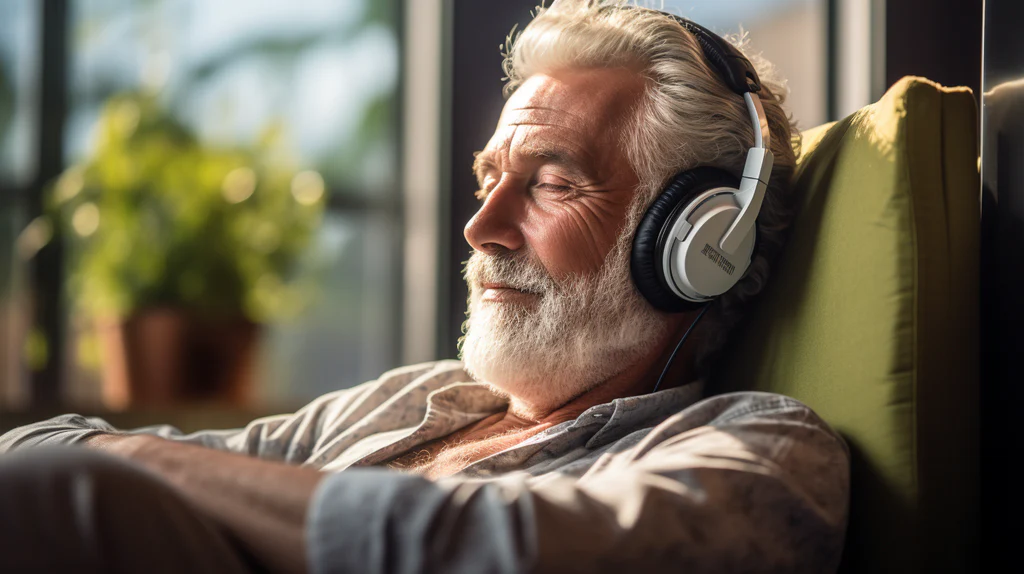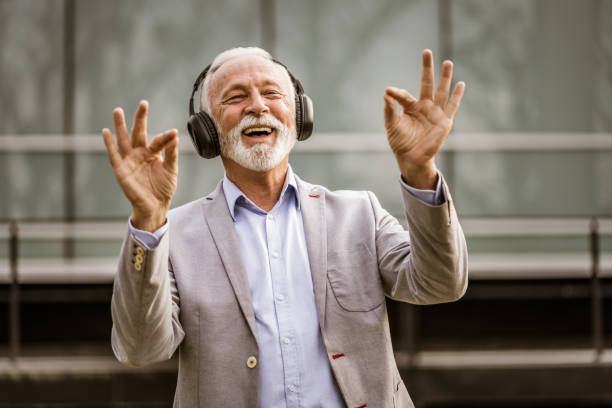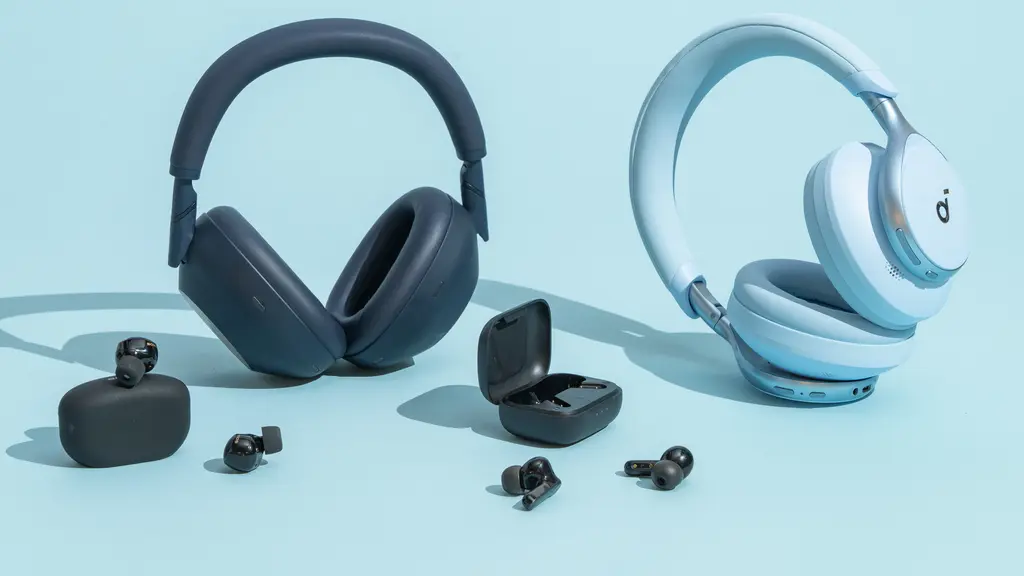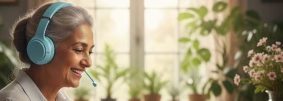In recent decades, technological advancements have reshaped the way people of all ages interact with the world, and the elderly are no exception. Among the many gadgets that have found a place in seniors’ lives, headphones stand out as more than just a tool for audio playback—they have evolved into a bridge connecting elderly individuals to comfort, safety, social interaction, and mental well-being. For a demographic often facing challenges like loneliness, age-related hearing loss, and limited mobility, headphones offer practical solutions that enhance their quality of life in ways both visible and subtle. This article explores the multifaceted relationship between headphones and the daily lives of the elderly, highlighting how this simple device addresses key needs and enriches their experiences.

One of the most significant roles headphones play in seniors’ lives is combating loneliness and providing emotional comfort. Loneliness is a prevalent issue among the elderly, with studies by organizations like the World Health Organization noting that over a third of adults aged 60 and above feel socially isolated regularly. This isolation can stem from the loss of loved ones, reduced mobility that limits outings, or family members living far away. Headphones, paired with smartphones or audio players, become a source of companionship in such moments. Many elderly individuals use headphones to listen to familiar music from their youth—whether it’s jazz from the 1950s, folk songs from their college years, or classical pieces that calm their minds. Music has a unique ability to evoke memories and emotions; for a senior who misses their late spouse, hearing a song they once danced to can bring a sense of warmth and connection, easing feelings of grief. Additionally, audiobooks and podcasts have grown in popularity among older adults. Headphones allow them to dive into stories, learn about new topics, or listen to talk shows that feel like a conversation with a friend—all without disturbing others in their household, such as a caregiver or a younger family member working from home. This quiet form of engagement fills empty hours and provides a sense of purpose, reducing the mental strain of loneliness.
Beyond emotional support, headphones also serve as a practical tool for managing age-related hearing loss, a common issue affecting approximately one in three adults aged 65 to 74, according to the National Institute on Deafness and Other Communication Disorders (NIDCD). Age-related hearing loss, or presbycusis, often makes it difficult for seniors to hear high-frequency sounds, follow conversations in noisy environments, or enjoy TV shows and movies without turning the volume up to levels that disturb others. Traditional hearing aids can be expensive, costing thousands of dollars, and may take time to adjust to. Headphones, especially those with adjustable volume, noise-canceling features, and clear sound quality, offer an affordable and accessible alternative for everyday use. For example, when watching TV, a senior can connect wireless headphones to the device, allowing them to set the volume to a level that suits their hearing needs without disrupting their partner or roommates. In public spaces like buses or cafes, noise-canceling headphones block out background chatter and traffic, making it easier for seniors to listen to music or take phone calls without straining to hear. This not only improves their ability to engage with audio content but also boosts their confidence in public settings, encouraging them to go out more often instead of staying home to avoid frustration from hearing difficulties.

Headphones also contribute to maintaining cognitive function and mental sharpness in the elderly, a key concern given the risk of age-related cognitive decline and conditions like dementia. Research has shown that engaging in mentally stimulating activities, such as learning new skills or processing complex information, can slow down cognitive decline. Headphones facilitate such activities by providing access to educational content tailored to seniors’ interests. Many elderly individuals use headphones to listen to language-learning podcasts, allowing them to pick up a new language at their own pace—whether it’s for a future trip or simply to keep their brain active. Others tune into educational audiobooks about history, science, or art, expanding their knowledge and encouraging critical thinking. Even listening to music can have cognitive benefits: a 2021 study published in the Journal of the American Geriatrics Society found that regular music listening improved memory recall and attention span in older adults with mild cognitive impairment. Headphones make it easy for seniors to integrate these activities into their daily routines—whether they’re walking in the park, doing household chores, or sitting in a chair—turning passive moments into opportunities for mental exercise. This not only keeps their minds sharp but also gives them a sense of achievement, as they continue to learn and grow well into their later years.
In addition to individual benefits, headphones play a role in strengthening social connections for the elderly, a crucial aspect of overall well-being. While it may seem counterintuitive—since headphones are often associated with “tuning out” the world—they actually help seniors stay connected to family, friends, and communities. With the rise of video calling platforms like Zoom, FaceTime, and WhatsApp, many elderly individuals use headphones with built-in microphones to stay in touch with loved ones who live far away. Unlike built-in phone or tablet speakers, headphones provide clearer audio, making it easier for seniors with hearing loss to follow conversations. For example, a grandmother living alone can use headphones to video call her grandchildren, hearing their laughter and voices clearly without missing a word, which strengthens their emotional bond. Headphones also enable seniors to participate in social groups and activities online. Many community centers and senior organizations offer virtual classes—such as yoga, painting, or book clubs—where participants use headphones to listen to instructors and interact with peers. In these settings, headphones ensure that seniors can hear instructions clearly and join in discussions, even if they’re unable to attend in person due to mobility issues or health concerns. This sense of belonging to a community reduces feelings of isolation and helps seniors maintain active social lives, which are vital for their mental and emotional health.

Moreover, headphones offer safety and convenience in various aspects of seniors’ daily lives. For instance, when walking outdoors or exercising, many elderly individuals use headphones to listen to music or audiobooks while staying aware of their surroundings. Unlike earbuds that block out all external sound, over-ear headphones with open-back designs or ambient sound modes allow seniors to hear important sounds like car horns, bike bells, or someone calling their name—reducing the risk of accidents. In the home, headphones can also be a safety tool: if a senior has a medical alert device connected to their phone, headphones can ensure they hear alerts or emergency calls clearly, even if they’re in a different room or the TV is on. Additionally, for seniors who live with caregivers or family members, headphones provide privacy. They can listen to personal content—such as a private phone call with a friend or a favorite audiobook—without worrying about others overhearing, which preserves their sense of independence and dignity. This privacy is especially important for seniors who may feel like their personal space is limited when living with others, as it allows them to maintain a sense of control over their daily lives.
Despite the many benefits, it’s important to acknowledge that not all seniors have equal access to headphones or the technology needed to use them. Some may struggle with setting up wireless headphones, while others may not be able to afford high-quality devices. To address this, community organizations, family members, and tech companies can play a role in making headphones more accessible. For example, community centers can offer workshops to teach seniors how to use Bluetooth headphones or connect them to their devices. Family members can help select affordable, user-friendly headphones with simple controls—such as large buttons or voice commands—that are easy for seniors with dexterity or vision issues to use. Tech companies can design headphones specifically for the elderly, with features like long battery life, comfortable over-ear designs, and compatibility with older devices. By improving access and usability, more seniors can benefit from the positive impact headphones have on their lives.

In conclusion, the relationship between headphones and the elderly is far more meaningful than just a way to listen to music. Headphones address key challenges faced by seniors—loneliness, hearing loss, cognitive decline, and social isolation—while also providing safety, convenience, and privacy. They serve as a source of comfort during quiet moments, a tool for staying connected to loved ones, and a gateway to lifelong learning. As the global population ages, recognizing the role of simple technologies like headphones in enhancing the quality of life for the elderly becomes increasingly important. By making headphones more accessible and user-friendly, we can ensure that more seniors are able to enjoy the benefits of this device, helping them live happier, healthier, and more independent lives in their later years.
